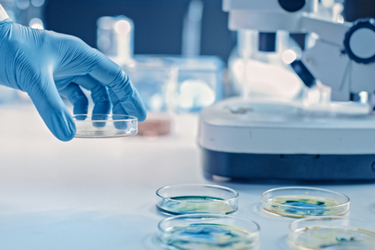Manufacture The Highest Quality Precision Plasmids With A Reliable Proven Platform Process

Since the first pharmaceutical application of plasmids (their introduction into bacteria to enable the production of therapeutic proteins) was achieved in the 1970s, plasmids have become critical starting materials for many advanced drug products. They are used to transfect mammalian cells to manufacture complex recombinant proteins, antibodies, and other biologic drug substances. With the increasing investment in advanced therapies such as viral vectors, cell-mediated, and nucleic acid-based modalities, plasmid manufacturing has become a major bottleneck to deliver these therapies. Plasmid transfection into mammalian cells is the predominant production method for viral vectors. Plasmids also serve as the template for mRNA manufacturing and have potential applications as vaccines and other therapeutics.
Current gene therapies treat rare diseases with small patient populations (<10,000).1 Small-scale production platforms are sufficient to meet plasmid needs for these products. Approximately 60% of gene and gene-modified therapy candidates in the pipeline, however, address more prevalent indications.2 It is estimated that viral vector marketed products could, require 100–1,000 g of plasmid per year.1 In addition, delivering one billion doses of an mRNA vaccine, meanwhile, can consume more than 1 kg of plasmid DNA.3
Given the wide range of applications for these double-stranded, circular pieces of DNA, plasmids have become essential building blocks for the manufacturing of advanced therapies. A significant percentage (between 80 to 90%) of plasmids used in the biopharmaceutical industry are produced by contract development and manufacturing organizations (CDMOs) with the necessary specialized expertise.1 Consequently, there has been a strong rise in demand for plasmid production services. The value of the global plasmid DNA manufacturing market is expected to expand at a compound annual growth rate of nearly 14% to reach $1.51 billion by 2030.4
The rapid increase in demand is causing plasmid supply and manufacturing to become a critical pain point in the industry. As the supply of plasmids has become more crucial, complex supply-chain issues that arose during the COVID-19 pandemic continue to linger. Wait times for access to good manufacturing practice (GMP) plasmid production capacity often exceed 12 months5 , which can lead to delays in the progress of late-stage clinical (phase III) programs and those nearing commercialization. In addition, it is increasingly common for drug developers to use GMP-grade plasmids for phase I/II trials on expectations of forthcoming regulatory requirements, further increasing demand.6
Get unlimited access to:
Enter your credentials below to log in. Not yet a member of Cell & Gene? Subscribe today.
